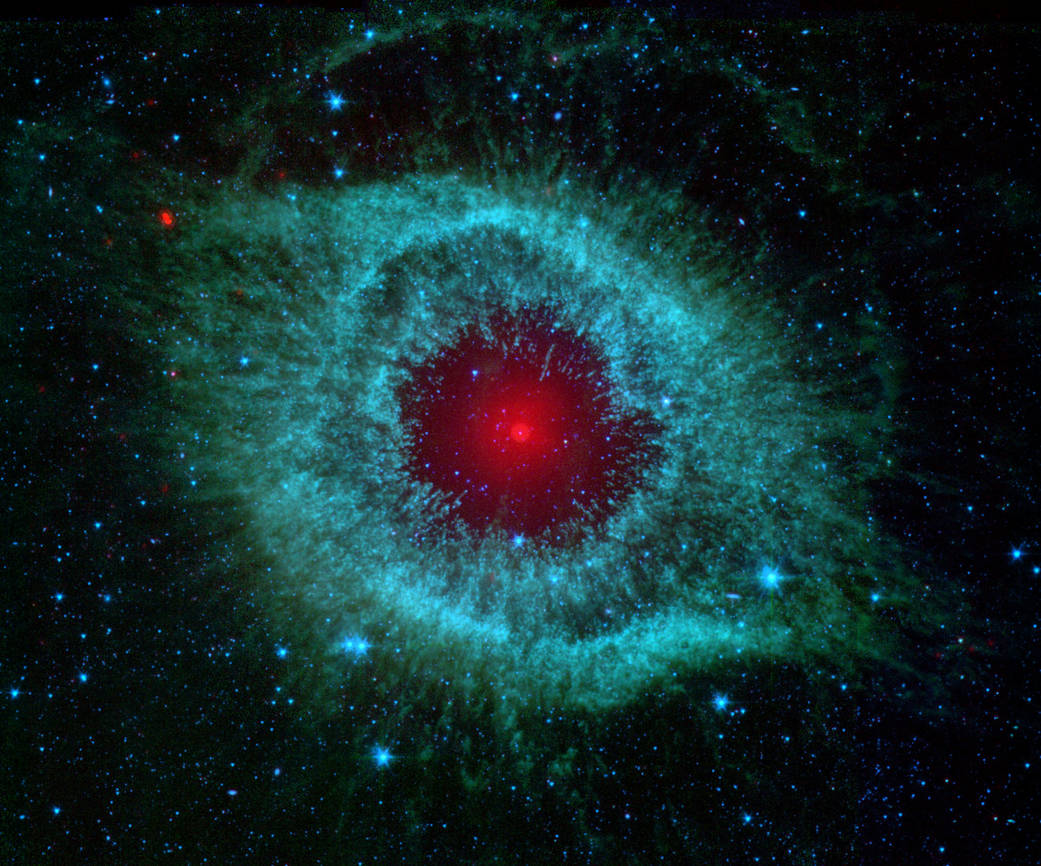
Dust makes this cosmic eye look red. This eerie Spitzer Space Telescope image shows infrared radiation from the well-studied Helix Nebula (NGC 7293), which is a mere 700 light-years away in the constellation Aquarius. The two light-year diameter shroud of dust and gas around a central white dwarf has long been considered an excellent example of a planetary nebula, representing the final stages in the evolution of a sun-like star.
Spitzer data show the nebula’s central star is itself immersed in a surprisingly bright infrared glow. Models suggest the glow is produced by a dust debris disk. Even though the nebular material was ejected from the star many thousands of years ago, the close-in dust could be generated by collisions in a reservoir of objects analogous to our own solar system’s Kuiper Belt or cometary Oort cloud. Formed in the distant planetary system, the comet-like bodies have otherwise survived even the dramatic late stages of the star’s evolution.Image credit: NASA, JPL-Caltech, Kate Su (Steward Obs, U. Arizona) et al.

























